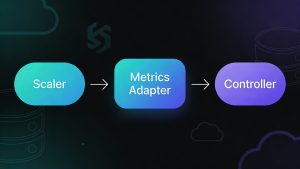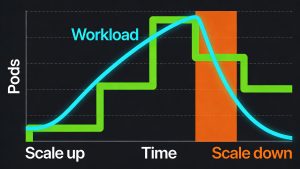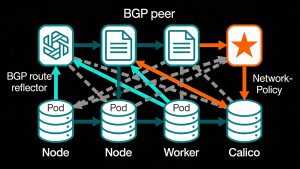In the modern software industry, Full-Stack Development has become a highly sought-after skill set. A Full-Stack Developer is proficient in both front-end (client-side) and back-end (server-side) technologies, allowing them to build complete web applications from start to finish.
With the increasing demand for web applications, companies seek developers who can handle the entire software development lifecycle, from designing user interfaces to managing databases and deploying applications. This role is essential in startups, enterprises, and freelance projects, making it one of the most valuable skill sets in tech.
In this blog, we look at the benefits, technologies, frameworks, stacks, and skills required for Full-Stack Development, along with some coding examples to illustrate the concepts.
Benefits of Full-Stack Development
Full-Stack Development offers several advantages, making it an attractive career choice:
1. Versatility
Full-Stack Developers can work on both front-end and back-end, giving them greater flexibility and reducing dependency on other teams.
2. Cost-Effectiveness
Companies can hire one Full-Stack Developer instead of multiple specialists, reducing costs while ensuring seamless development.
3. Faster Development and Deployment
Since Full-Stack Developers handle both ends, they can quickly integrate features, reducing communication overhead and increasing speed.
4. High Demand & Career Growth
The need for Full-Stack Developers is steadily rising, offering numerous job opportunities across industries.
5. End-to-End Problem-Solving Skills
Full-Stack Developers understand the entire development process, making them better at troubleshooting and optimizing performance.
Technologies Used in Full-Stack Development
A Full-Stack Developer must be familiar with several technologies, categorized into front-end, back-end, databases, and DevOps tools.
1. Front-End Technologies (Client-Side)
Front-end development focuses on the user interface (UI) and user experience (UX) of a web application. Common technologies include:
- HTML (HyperText Markup Language): Structure of web pages.
- CSS (Cascading Style Sheets): Styling and design of web pages.
- JavaScript (JS): Adds interactivity and logic to web pages.
- React.js: A JavaScript library for building UI components.
- Angular: A TypeScript-based front-end framework by Google.
- Vue.js: A lightweight JavaScript framework for building UIs.
Example: Simple React Component
jsx
import React from 'react';
function Greeting() {
return <h1>Hello, welcome to Full-Stack Development!</h1>;
}
export default Greeting;
2. Back-End Technologies (Server-Side)
Back-end development deals with server logic, databases, and APIs. Popular back-end technologies include:
- Node.js: JavaScript runtime for building scalable applications.
- Express.js: A lightweight Node.js framework for APIs.
- Django: A Python framework for rapid web development.
- Flask: A lightweight Python framework for microservices.
- Spring Boot: A Java-based framework for enterprise applications.
Example: Simple Express.js Server
javascript
const express = require('express');
const app = express();
app.get('/', (req, res) => {
res.send('Welcome to the Full-Stack Developer Guide!');
});
app.listen(3000, () => {
console.log('Server is running on port 3000');
});3. Database Technologies
Databases store application data. Common choices include:
- SQL Databases: MySQL, PostgreSQL, MS SQL Server.
- NoSQL Databases: MongoDB, Firebase, CouchDB.
- Graph Databases: Neo4j (for relational data).
Example: MongoDB Schema in Mongoose (Node.js)
javascript
const mongoose = require('mongoose');
const UserSchema = new mongoose.Schema({
name: String,
email: String,
password: String
});
const User = mongoose.model('User', UserSchema);
module.exports = User;4. DevOps & Deployment Tools
Full-Stack Developers also work with DevOps tools for CI/CD, deployment, and monitoring:
- Docker (Containerization)
- Kubernetes (Orchestration)
- AWS / Google Cloud / Azure (Cloud services)
- Git & GitHub (Version control)
- Jenkins / GitHub Actions (CI/CD pipelines)
Full-Stack Development Frameworks
Full-stack development frameworks simplify the software development process by providing pre-built components, structured architecture, and ready-to-use tools for both front-end and back-end development. These frameworks help developers build scalable, efficient, and maintainable applications with less effort.
Here’s a brief overview of some popular full-stack frameworks:
1. MEAN Stack (MongoDB, Express.js, Angular, Node.js)
The MEAN stack is a JavaScript-based full-stack framework, making it ideal for seamless front-end and back-end development. It is widely used for dynamic web applications, real-time apps, and single-page applications (SPAs).
MongoDB: A NoSQL database that stores data in a flexible JSON-like format.
Express.js: A lightweight backend framework for building APIs and handling server-side logic.
Angular: A powerful front-end framework developed by Google for building modular and interactive web applications.
Node.js: A runtime environment that allows JavaScript to run on the server, enabling high-performance and scalable applications.
2. MERN Stack (MongoDB, Express.js, React.js, Node.js)
The MERN stack is similar to MEAN, except Angular is replaced by React.js, which provides better flexibility for UI development. It is widely used for progressive web apps, interactive UIs, and complex front-end-driven applications.
MongoDB: NoSQL database for flexible data storage.
Express.js: Manages server-side operations efficiently.
React.js: A component-based front-end library that enhances UI performance with a virtual DOM.
Node.js: Enables server-side JavaScript execution for scalability.
3. LAMP Stack (Linux, Apache, MySQL, PHP)
The LAMP stack is a classic full-stack framework widely used for traditional websites, CMS platforms, and enterprise applications due to its stability and reliability.
Linux: The operating system that provides a secure and stable environment for hosting applications.
Apache: A widely used web server for handling HTTP requests.
MySQL: A powerful relational database system for structured data storage.
PHP: A server-side scripting language that dynamically generates web pages.
4. Django + React (Python + JavaScript)
The combination of Django (Python) and React (JavaScript) is great for building AI-powered applications, data-driven platforms, and high-performance web apps.
Django: A high-level Python web framework with built-in security and scalability.
React.js: A UI library that makes front-end development dynamic and efficient.
REST API Support: Django and React work seamlessly together using RESTful APIs.
5. Spring Boot + Angular (Java + TypeScript)
This Java-based full-stack framework is ideal for large-scale, enterprise-level applications that require high security, modularity, and scalability.
Spring Boot: A Java-based microservices framework that simplifies backend development.
Angular: A structured and modular front-end framework using TypeScript.
Each of these full-stack frameworks caters to different needs, and the right choice depends on project requirements, scalability, and performance goals.
Full-Stack Developers: An Increasingly Important Role
Full-Stack Developers are valuable assets for businesses. Their ability to handle entire applications makes them highly sought after. Their role includes:
- Designing UI/UX components
- Building APIs and microservices
- Managing databases
- Securing applications
- Deploying and maintaining cloud-based applications
Example: A Full-Stack Web Application (MERN Stack)
Back-End (Express.js API)
javascript
const express = require('express');
const mongoose = require('mongoose');
const cors = require('cors');
const app = express();
app.use(cors());
app.use(express.json());
mongoose.connect('mongodb://localhost:27017/fullstack', {
useNewUrlParser: true,
useUnifiedTopology: true
});
const UserSchema = new mongoose.Schema({ name: String, email: String });
const User = mongoose.model('User', UserSchema);
app.post('/users', async (req, res) => {
const user = new User(req.body);
await user.save();
res.send(user);
});
app.listen(5000, () => console.log('Server running on port 5000'));Front-End (React.js Component)
jsx
import React, { useState } from 'react';
function App() {
const [name, setName] = useState('');
const [email, setEmail] = useState('');
const handleSubmit = async () => {
await fetch('http://localhost:5000/users', {
method: 'POST',
headers: { 'Content-Type': 'application/json' },
body: JSON.stringify({ name, email })
});
};
return (
<div>
<h1>Full-Stack Application</h1>
<input placeholder="Name" onChange={(e) => setName(e.target.value)} />
<input placeholder="Email" onChange={(e) => setEmail(e.target.value)} />
<button onClick={handleSubmit}>Submit</button>
</div>
);
}
export default App;Conclusion
Full-Stack Development is an exciting and rewarding field that enables developers to build complete applications efficiently. The combination of front-end, back-end, and database skills makes Full-Stack Developers highly versatile and in demand.
Whether you choose MERN, MEAN, LAMP, or other stacks, mastering technologies like React, Node.js, MongoDB, and DevOps tools can unlock great career opportunities. With consistent practice and hands-on projects, you can become a proficient Full-Stack Developer and build scalable, real-world applications.
So, are you ready to dive into Full-Stack Development and create the next big web application?



